3. Groundmass
As it is well known, the elemental constituents of soil (sands, silts, clays, organic materials, etc.) do not occur isolated, but are joined giving rise to aggregations. These aggregates are observable on a macromorphological level, directly in the soil's profile, in the field, but they can be analysed in a much more exhaustive way in the microscope.
Pedologic aggregation is described on the basis
of: the types of: aggregates, voids and microstructures.
Types of Aggregates
![]() Crumb. Porous
aggregates with more or less spheroidal shapes.
Crumb. Porous
aggregates with more or less spheroidal shapes.
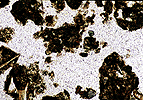
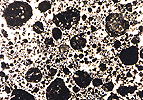
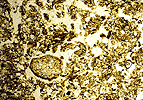
![]() Granular. Non-porous aggregates with
shapes tending towards spheroidal.
Granular. Non-porous aggregates with
shapes tending towards spheroidal.
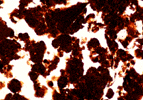
![]() In angular blocks. Aggregates formed of two more or less flat faces, which when cut form
edges and these lead to vertices. In short, their shape is similar to irregular
geometrical polyhedrons. The faces of the aggregates fit well with the faces
of their adjacent aggregates.
In angular blocks. Aggregates formed of two more or less flat faces, which when cut form
edges and these lead to vertices. In short, their shape is similar to irregular
geometrical polyhedrons. The faces of the aggregates fit well with the faces
of their adjacent aggregates.
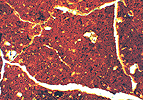
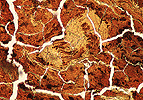
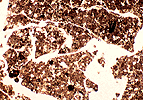
![]() In sub-angular blocks. Similar to the above, but the blocks are less defined. The faces are
not as flat, the edges are blunt and there are hardly any vertices. Neither
do the aggregates fit so well in the microstructure of angular blocks.
In sub-angular blocks. Similar to the above, but the blocks are less defined. The faces are
not as flat, the edges are blunt and there are hardly any vertices. Neither
do the aggregates fit so well in the microstructure of angular blocks.
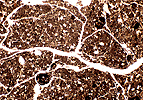
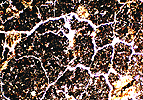
![]() Prismatic. Angular blocks, like a prism, in which the vertical dimension predominates
with regard to the other two. They are normally too large to be able to observe
them in a microscope.
Prismatic. Angular blocks, like a prism, in which the vertical dimension predominates
with regard to the other two. They are normally too large to be able to observe
them in a microscope.
![]() Platy. Aggregates
with a leafy shape, in which the vertical dimension is much shorter than the
other two.
Platy. Aggregates
with a leafy shape, in which the vertical dimension is much shorter than the
other two.
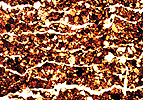
Degree of development and accomodation